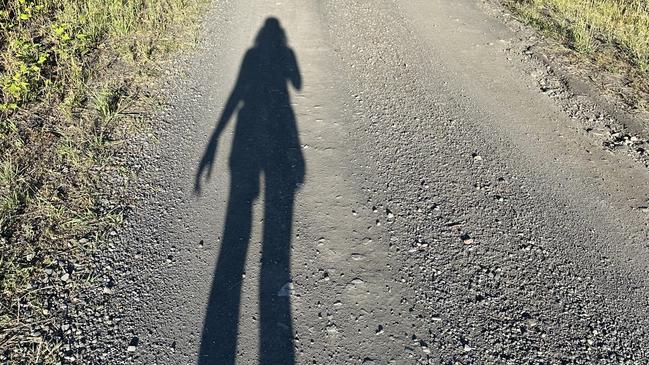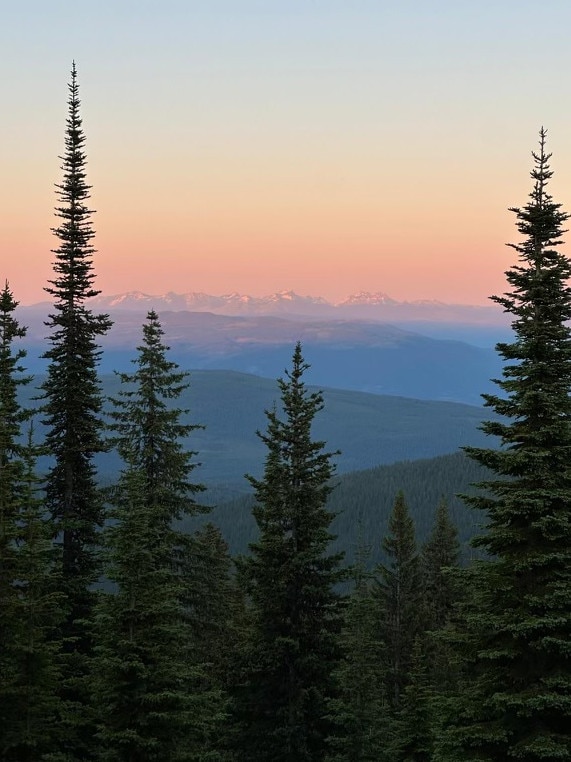My own cautionary tale about society’s overregulation
I got lost in the forests of mountainous British Columbia. Those who jump to conclusions will put it down to me ignoring a sign that said ‘Summer Boundary Ends Here’. But there’s a twist.

When we’re overregulated there is, for some, a natural tendency to ignore what seem like dumb rules made by, and for, nincompoops who believe individual responsibility has gone out of fashion.
I’m an adult and I know the particular mountain well – in winter, at least. I was walking on the same path that wraps around the front side of the ski slopes I have been visiting for years. The “Summer Boundary” sign made no sense: the path on the verboten side looked very much like the approved path. It was one way. A “Beware of Avalanches” sign is a different kettle of fish.
My plan was to turn around after 20 minutes or so and return to the village. Getting lost on that sparkling September morning didn’t cross my mind.


Bears were on my mind. I had my little bell to let them know, politely, that I was on this path, and I would be grateful if they remained in the woods on either side of me, where bears belong. Locals had told me to sing. Instead, I put The Rest is History podcast on speaker. Dominic Sandbrook and Tom Holland regaled me (and the nearby wildlife) with the story of Piltdown man – the exciting 1912 discovery in Sussex that apparently provided the “missing link” between apes and men – being fake.
My first mountain walk was going to plan. Until I got lost, for hours. I tried not to think of hungry bears, some filmed recently by my Canadian friend Heather, “trick or treating” their way from one mountain house to the next in search of a snack. Only there were no houses. Only me.
I consoled myself with learning something. Back home in Australia, when I ask a question that one of my smart-arse children assumes is rhetorical, he responds with “do bears shit in the woods?” Or, “are the Kennedys gun shy?” Or “is the Pope a Catholic?” I can confirm, from first-hand evidence, the first is true.
How different people react to rules mirrors the different responses elicited by that “dress” thingy that spread like wildfire on the internet a few years ago. Looking at the image, some people saw a blue dress. Others looking at the same image saw a black dress, or a white one. There was no right answer.
As New York University scientist Pascal Wallisch wrote in Slate a few years later about the blue/black dress phenomenon, “The brain cannot be accused of epistemic modesty. It is well-known that in situations like this – where it faces profound uncertainty – it confidently fills in the gaps in knowledge by making assumptions. Usually, its assumptions are based on what it has most frequently encountered in the past. For instance, if the sensory information is more uncertain, observers will estimate object speeds to be slower than they actually are, presumably because slow objects are much more common in the environment than fast ones. (Indeed, most objects in any given field of view don’t move at all.) Colour and lighting are no exception.”
Same goes for rules. We’ve grown accustomed to too many dumb ones. The Covid years turned me into a nightmare for my poor family, most of whom, by contrast, comply with rules in silence. Their tolerance for rules is different. I can’t account for my loathing of daft mandates, except to wonder whether a large hard-copy instruction booklet fell on my head when I was a small child.
Further context may help explain why I ignored the mountain sign. If you put aside the skiing and the holy-hell crazy dangerous mountain biking, Canada is a cottonwool society. Always done with the best of intentions, Canadian legislators, rule-makers and bureaucrats haven’t met a person, action, item they won’t regulate for “safety” reasons. When a country cries wolf so often, it’s easy to grow numb to their warnings.
A few days earlier in Vancouver, after ordering a gin and tonic late one afternoon at a cafe bar, I turned to sit at an outside table. I was promptly told I couldn’t drink alcohol outside. With a downtrodden look, the owner explained that I needed to understand Vancouver. “Here, the government knows you. It knows you’ll turn into a wild animal after an alcoholic beverage so they demand a fence,” she told me. Until very recently, you could shoot up on the same pavement, I wanted to say.
But the exasperated Vancouver business owner was so beaten down by regulations she wouldn’t see the funny side.
I was minded to cite an Australian parliamentary inquiry into the costs of overregulation from a few years ago that heard from small business owners who said they throw up their hands and cease complying when there are too many stupid rules. But again, the cafe owner didn’t deserve a hefty fine.
Even without a penalty, over-regulation costs a bundle. And small businesses bear the greatest burden because most compliance costs are fixed, meaning they chew up a greater proportion of small firms’ resources. The OECD has said there is a snowball effect to the dramatically regressive nature of overregulation: resources are directed to compliance, running down a company’s reserves, making the business more vulnerable to financial distress, reducing growth and job creation, taking people, often the business owner, away from the core business of generating sales and revenue.
We need not dwell on different tolerance levels to rules to understand that overregulation turns adults into infants, wrecks small businesses, shrinks big businesses, and means we have libraries of reports by different agencies over many years warning us about the high costs of overregulation – only for our ruling classes to carry on overregulating.
I’d love to see an Australian government efficiency commission led by Elon Musk. But that wont solve the bigger problem: we are swamped by permanent make-work industries for rule-makers, not rule removalists.

The Australian Stock Exchange, for example, should understand that dumb rules tie up companies in red-tape. In your dreams. Instead, the ASX has been on an overregulatory blinder for years.
Why weren’t business groups – especially the Business Council of Australia – manning the barricades at the last election, before Anthony Albanese and his union overlords took office and overregulated the workplace? Because the BCA is now chock-full of “service providers” – think lawyers, accountants, consultants – who make a motza from overregulation. The conflicts are obvious.
We’re kidding ourselves if we think we can live safely and well with more and more rules. Overregulation kills risk too. People have different appetites for risk, but at the rate we’re going with rules, we won’t know what low-range risk tastes like.
The magnificent sight last week of billionaire Jared Isaacman popping outside the Space X capsule in his luminous white spacesuit against the backdrop of deep space was one for the record books. The astronauts on the Polaris mission travelled further into the solar system – over 1400km from Earth – than any previous crewed mission since the final Apollo mission in 1972. This, the first of three Polaris missions, is trying to develop space suit technology needed to fulfil Musk’s dream of sending people to Mars someday.
When BBC host Nuala McGovern asked why space travel went so far into space in the ’70s, only to stall for 50 years, Astronomer Royal for Scotland Catherine Heymans put it down to risk.
“Back in the ’70s we were a lot happier taking risks with our astronauts – we’ve become a lot more risk-averse and so the furthest distance most astronauts go these days is to the international space station.”
Discovering new worlds is about taking dangerous risks. Living well in our current one involves managing, not eliminating, risks – even when we’re not dangling in space.
I made it back to the mountain village in British Columbia (after calling the Ski Patrol number stored on my phone for winter emergencies) to cheers from friends and locals idling in the late morning sun. In summer, there are no goggles and scarves to hide your humiliation.
Getting lost was no one’s fault but mine – and the warning sign was silly. Both things can be true. I was better prepared for next time: my Canadian friend Heather gave me a can of bear mace.





I got lost in the forests of mountainous British Columbia. Those who jump to conclusions will put it down to me ignoring a sign that said “Summer Boundary Ends Here”. But here’s the twist. I got lost because I have grown so accustomed to, so bored by, so immune to stupid directions, rules and regulations imposed by governments of all kinds, at all levels, from mountain bureaucrats to Canberra politicians, that I thought I knew better.